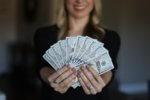Predictably Irrational
Dan Ariely’s book Predictably Irrational is one of the most interesting books I’ve read on behavioral economics. It turns out, not only are we, as consumers, pretty irrational in our decision making, but we are also consistent. This has major implications for someone trying to grow their business.
Predictably Irrational dives deep into the human psychology of decision making. This insight provides a roadmap to make some simple changes to help you sell a product or grow your business.
Behavioral Economics
Some of you may be asking, what exactly is behavioral economics? If you’ve never heard this term before, don’t worry. Simply put, behavioral economics is the study of human psychology as it relates to their economic decision making. Basically, why we choose to purchase, save, or invest.
It’s a relatively newer field, but one that should still be taken seriously. In fact, the famous behavioral economist Richard Thaler (you may have seen him as himself in The Big Short) recently won the Nobel Prize.
The Power of Brands
The first takeaway from Ariely’s work is how powerful brands can be. Sure, we all know that we are attracted to great brands (Apple or Google anyone?), but the level to which they impact our decisions is pretty fascinating.
Most people will remember the “Pepsi Challenge” ads from a while back.
In them, Pepsi claimed that people preferred their soda to Coke in a blind taste test. However, Coke also claimed that people preferred their brand to Pepsi based on their own tests. It turns out they both were right.
The difference was the power of the Coke brand. In a blind taste test, people did in fact enjoy Pepsi better. But when they saw that red bottle? Coke was the winner.
It turns out that when we relate and recognize a brand, different portions of our brain are activated, making us more likely to enjoy the product. So even though Coke and Pepsi are essentially the same, we connect with the Coke brand more.
Building Your Brand
This research has major implications for anyone starting a business.
While most people start by trying to build the best product, your time may actually be better spent building the best brand. If the difference between two drinks is branding, then why focus on trying to make the best product ever?
You’ll spend too much time getting the product ready and by the time you have it complete, no one will recognize your brand. So, someone else could have a similar product, but a better brand and outsell you. Remember you want to be Coke not Pepsi.
Once you have a viable product, focus on your branding. Think about who your target market is.
What are their likes/dislikes?
What type of style really connects with them?
Focus your attention and efforts on those areas.
We All Love Free
When it comes to human psychology, nothing is better than free. It turns out people will buy something they don’t necessarily need or pay more, just to get something for free.
Ariely refers to this as the “cost of zero cost”. It’s why people keep going back for more food at buffets or why we can’t get enough promotional pens and t-shirts. We love free!
Amazon is a great case study in the power of free. Ariely describes how people are willing to buy extra items to get free shipping instead of just paying a few dollars to ship the one item they want. Or how when Amazon’s French division charged one franc (about 20 cents) for shipping they didn’t see an increase in sales. But when they made shipping free, like the rest of the world, their sales jumped.
Understanding that people gravitate more to free items can help you hone your marketing. Instead of just selling a product, offer a free add on. Discounting something may help boost sales, but as Amazon showed, even a few cents is still too much for some people. But going down to free? That changes things completely.
Product Pricing
If you want to stay in business, you can’t give everything away for free, so what’s the best way to price your product?
Consumers typically look for relative prices. Given the option of three different priced TVs, people often choice the middle one. Why? Because, if they don’t know much about what’s the best deal, they won’t want to choose the cheapest model, but they won’t want to pay the most either.
Another example fromPredictably Irrational involves Willams-Sonoma and their bread making machine. They started with one model that wasn’t selling well. Instead of lowering the price, they introduced a bigger and more expensive model. When the new model was introduced, sales of the original started to climb! With only one model, people couldn’t tell if it was a good deal or not. But once a more expensive version came out they had a way to compare the price.
Electronics companies do the same thing when they offer similar versions and models of the same product at different price points. A $700 iPhone? Maybe that’s a good price, maybe it isn’t. But when compared to a $1,000 iPhone it becomes a lot easier to justify since you see it as saving $300.
Pricing Structure
When you’re ready to launch your product or service, keep the idea of tiered pricing in mind. Set up different packages so that consumers can compare. If you only have one option, people will be hesitant to buy since they want to make sure they are getting the best value. But if you have higher and lower priced options, they can easily compare.
Business vs. Consumers
At this point, you may have thought, “Don’t these ideas help business exploit customers?”
Yes, these tactics could be taken too far, which is why consumers need to understand their biases in the first place. But, I’m not suggesting that you use these ideas to price gouge or trick people.
Businesses face a great deal of competition. Getting through to their target audience can be challenging. As a business owner, better understanding the decision-making process can help you get your product to more people that can benefit from it.
Instead of fighting human psychology, understand it and use it to your advantage in an ethical way.







Leave a Reply